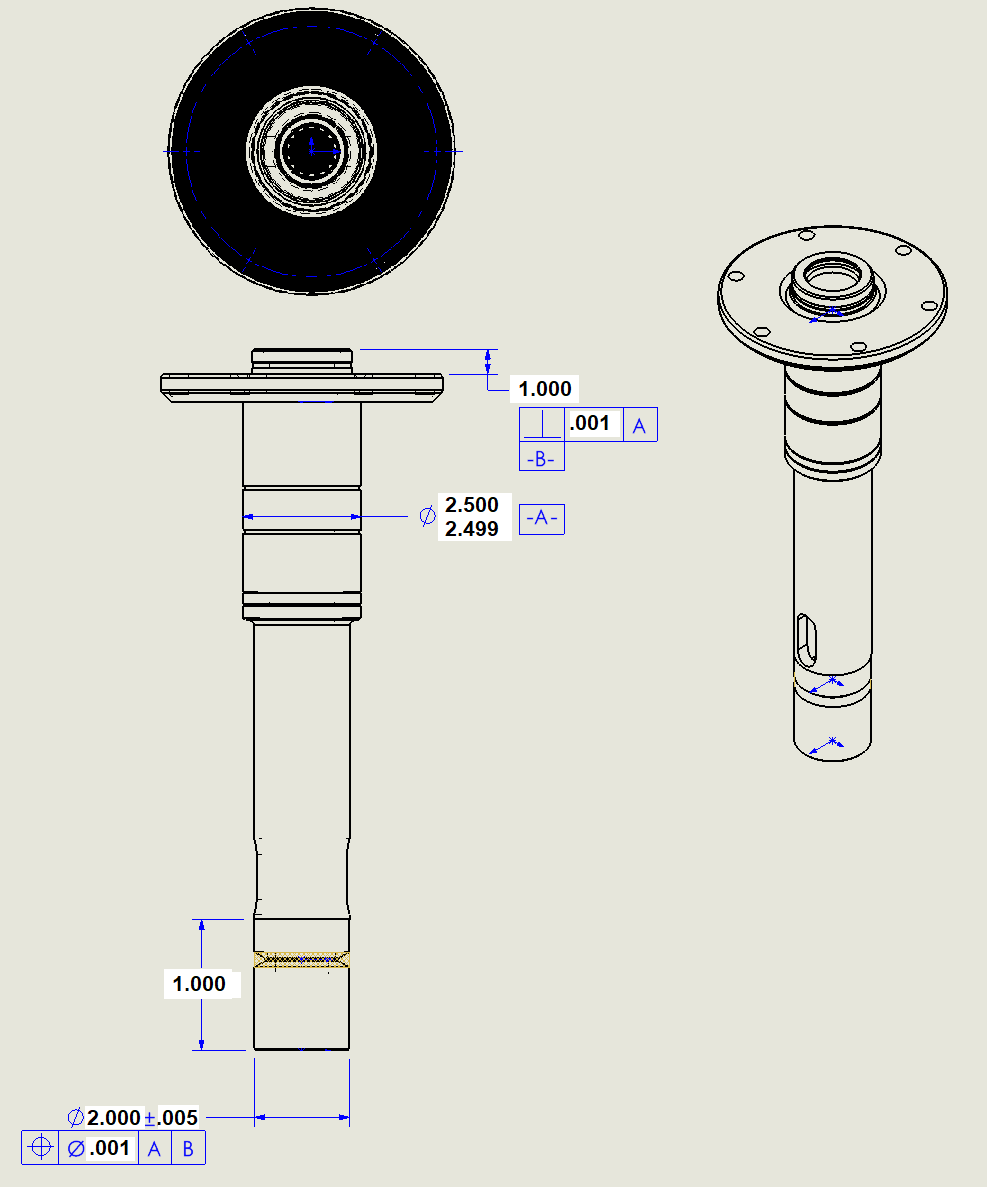Hi guys. I have the attached print and they are saying the position tolerance is out. I am measuring on my CMM using a cylinder for Datum A and then for Datum B using a midplane constructed between planes on each of the faces at the top that make the 1.000 dimension. I decided to run it without Datum B and I get the exact same result, or with just one face instead of the midplane and get the exact same. Got me thinking, what is datum B even constraining for the position tolerance? I am thinking that datum A constrains the orientation and "concentricity" of the two cylinders. So datum B would be an extra orientation constraint? but since Datum A is first, the orientation of datum A would trump that of datum B making Datum B useless. I am probably wrong, still new to this any advice is welcome. Thank you

